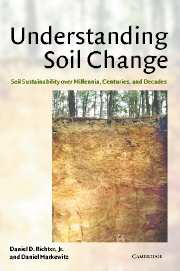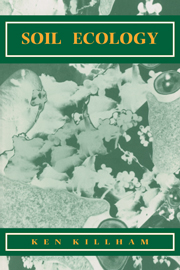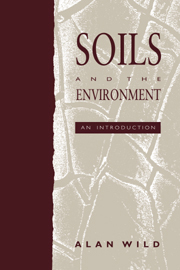Understanding Soil Change
Across the world, soils are managed with an intensity and at a geographic scale never before attempted, yet we know remarkably little about how and why managed soils change through time. Understanding Soil Change explores a legacy of soil change in south-eastern North America, a region of global ecologic, agricultural and forestry significance: from the acidic soils of primary hardwood forests that covered the region until about 1800, through the marked transformations affected by long-cultivated cotton, to contemporary soils of rapidly growing and intensively managed pine forests. These well-documented records significantly enrich the science of ecology and pedology, and provide valuable lessons for land management throughout the world. The book calls for the establishment of a global network of soil-ecosystem studies, like the invaluable Calhoun study on which the book is based, to provide further information on sustainable land management, vital as human demands on soil continue to increase.
- For anyone interested in soils, in human dependence on soils, and on how human activities affect changes in soils and ecosystems
- Provides an accessible synthesis of long-term observations from the Calhoun Forest Experiment, USA
- Presents general conclusions from the Calhoun data which provide lessons for land management throughout the world
Reviews & endorsements
"The authors write well ... They have effectively make their case." Earth Sciences History
"...a one-of-a-kind book for anyone interested in soils, changes in soils from human activity, and dependence on soils as a source of sustenance....A very readable work with excellent illustrations, figures, and tables, and extensive recommended readings and reference section. Undergraduates through professional; (Recommended for) two-year technical program students." Choice
"This marvellous little book tells the story of southeastern US ecosystems from the perspective of soil changes over timescales of decades, centuries and millennia...[It] fills an important niche in the biogeochemical literature, and not only as a regional case study...This study shows the importance of an integrated appraisal of soil dynamics in ecosystem function, and demonstrates the increasing maturity of soil science." Nature
"Understanding Soil Change is a pioneering book worthy of follow-ups...clearly written and well illustrated. It was used as a graduate text and is highly recommended to all soil scientists and their students-a fine example of a broad study of major soil changes and their relation to management. It should be no less relevant to ecologists, biologists, and geographers, who too frequently, when describing or studying ecosystems, disregard the importance of soil characteristics, their dynamics, and human impacts on soils." Soil Science
"...wonderful book is a great window for biologists into the most imprtant black box on Earth." Dan Binkley, Quarterly Review of Biology
"The book is a valued reference to environmental biologists for three reasons. First, the work provides an excellent overview of the challenge of soil sustainability given current and future food and fiber expectations. Second, the authors provide a focused perspective on the importance of time scales and land-use legacies in understanding the specific attributes of soil types found in many warm-temperate and subtropical regions of the world. Finally, and of particular interest, the authors detail the extent to which land use management (i.e. plant community composition) can modify soil characteristics...Many ecologists will find this book useful for both their teaching and their research efforts." Trends in Ecology and Evolution
"The book is very well written and pleasant to read ... a good addition to anyone's collection of books on soil and agriculture and forestry."
Product details
August 2007Paperback
9780521039437
272 pages
234 × 155 × 13 mm
0.391kg
73 b/w illus. 33 tables
Available
Table of Contents
- Preface
- Acknowledgements
- Foreword William A. Reiners and Pedro A. Sánchez
- Part I. Soil and Sustainability:
- 1. Concerns about soil in the modern world
- 2. Managing soils for productivity and environmental quality
- 3. Biogeochemical sciences in support of soil management
- 4. The science of estimating soil change
- 5. Soil change over millennia, centuries and decades
- 6. The Calhoun forest: a window to understanding soil change
- Part II. Soil Change over Time Scales of Millennia: Long-Term Pedogenesis
- 7. Soil development from the Devonian to Mendocino and Hawaii
- 8. Genesis of advanced weathering-stage soils at the Calhoun ecosystem
- 9. The Calhoun soil profile
- 10. The forest's biogeochemical attack on soil minerals
- Part III. Soil Change over Time Scales of Centuries: Conversion of Primary Forests to Agricultural Fields:
- 11. Agricultural beginnings: Native American cultivation
- 12. Soil biogeochemistry in cotton fields of the Old South
- 13. Agricultural legacies in old-field soils
- Part IV. Soil Change over Time Scales of Decades: Conversion of Agricultural Fields to Secondary Forests:
- 14. The birth of a new forest
- 15. Accumulation and rapid turnover of soil carbon in a re-establishing forest
- 16. Satisfying a forest's four-decade nitrogen demand
- 17. Soil re-acidification and circulation of nutrient cations
- 18. Changes in soil-phosphorus fractions in a re-establishing forest
- Part V. Soil Change and the Future:
- 19. The case for long-term soil-ecosystem experiments
- Epilogue
- Recommended readings
- Appendix I. Carbonic acid weathering reactions
- Appendix II. Simulation of bomb-produced 14C in the forest floor at the Calhoun Experimental Forest, SC
- Appendix III. Sources of variation in the Calhoun Experimental Forest's main analysis of variance (ANOVA)
- Appendix IV. Total elemental concentrations for soils from the Calhoun Experimental Forest, SC
- References
- Index.









